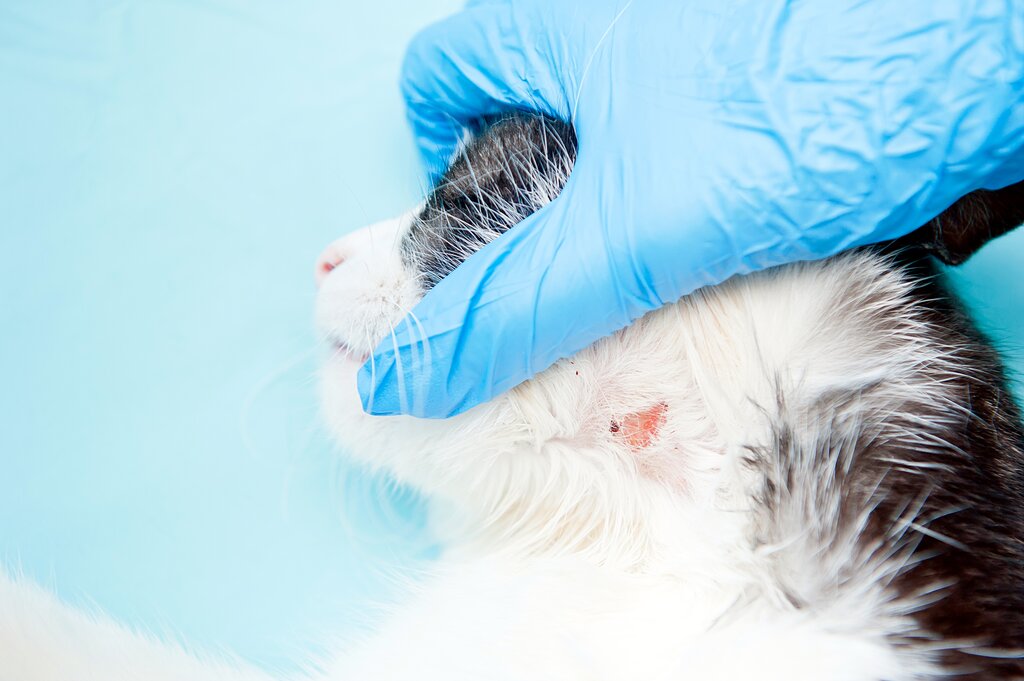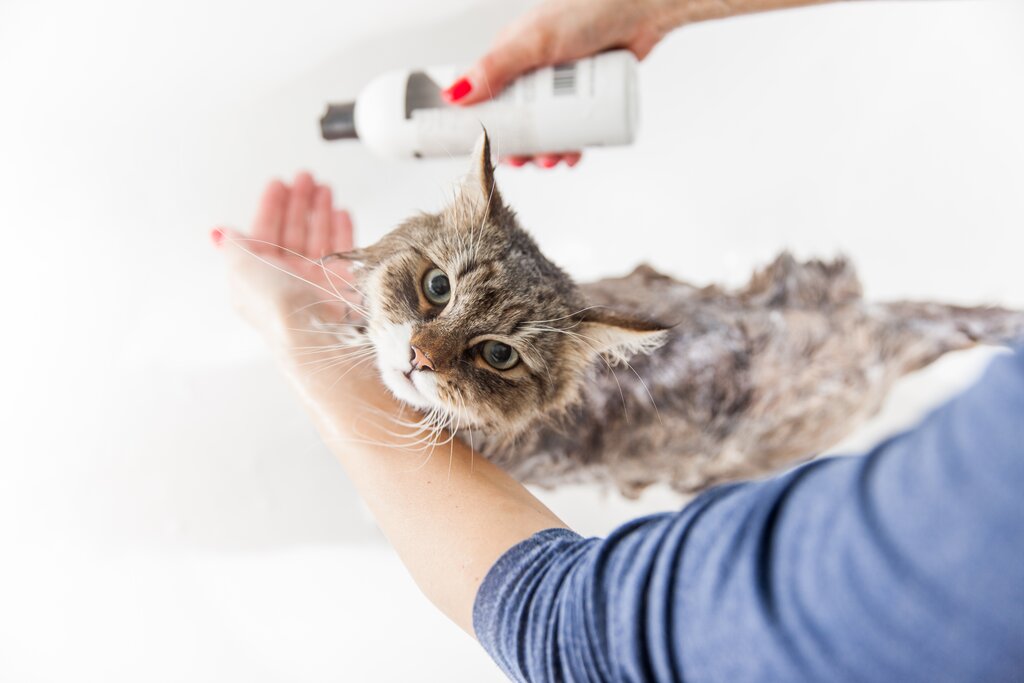Is ringworm a worm? Despite its name, Ringworm is not a worm! Ringworm is actually caused by a fungus. (Perhaps it would be better named 'Ringus'!) The only thing it has to do with rings is the typical circular area of dry, scaley rash that usually appears on the animal.
The fungal pathogen responsible for ringworm is a commensal organism found on healthy skin, but only causes disease when it grows in too great a quantity, or if the skin or immune system is comprimised and can't fight it off. The pathogen that causes ringworm is also responsible for 'athlete's foot'.
In cats, about 98% of ringworm cases are caused by a species of fungus called Microsporum canis, however it may be caused by any species of Microsporum, Nannizzia, or Trichophyton fungi.2 These types of fungi are invisible to the naked eye, but can be seen under a microscope.
How do cats get ringworm?
The Ringworm fungi spread easily in the environment. It is primarily spread via contact with an infected host (be it feline, human, or another mammal such as a dog) or by touching contaminated objects like furniture, towels or grooming tools. Broken hairs that contain the fungal spores are a common source of spreading ringworm. Spores may survive in the environment for up to a year.1
As with many diseases, direct contact does not always result in infection. The development of lesions depends on host factors - particularly age, immune system health, skin quality, hygeine, and nutrition. This is why the disease is commonly seen in kittens, stressed cats, pregnant cats, or those with skin allergies. Interestingly, Persian cats may be predisposed to developing ringworm. It is unclear, however, whether FIV-infected cats are more susceptible to ringworm.4 Likewise, children, pregnant women, the elderly, and immunocompromised people (such as those with HIV or eczema) are more commonly affected.
Where did my kitten catch ringworm? As stated previously, the Ringworm fungus is a commensal organism that grows on the skin naturally, so your kitten may be exposed anywhere or from anywone. However, kittens are often exposed to larger quantities of the fungus in environments such as a shelter, cattery, pet store or breeder - which may concurrently be a stressful environment for the kitten and therefore compromises their already fragile immune system.



